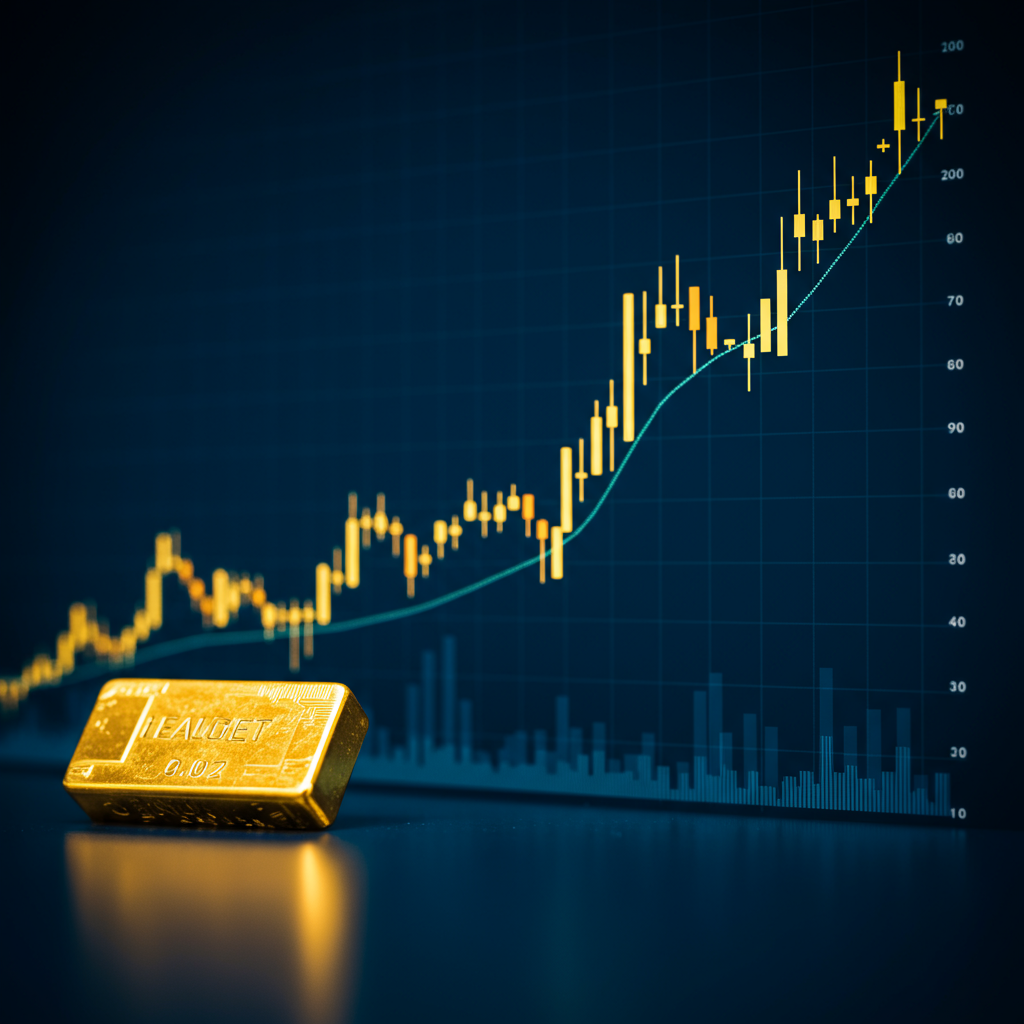The steady, silent climb of gold has culminated in a watershed moment for global markets: the yellow metal has breached the significant psychological barrier of $2,500 per ounce. This is not just another market fluctuation; it is a powerful signal, a financial barometer indicating a storm of uncertainty brewing in the global economy. For investors, this record high is forcing a critical and urgent question: Is this the definitive sign to abandon riskier assets and run for the shelter of safe havens?

The surge in gold’s value is not happening in a vacuum. It is a direct response to a potent cocktail of geopolitical turmoil, persistent inflation, and deep-seated fears about the stability of sovereign debt. To answer whether it’s time to pivot to safety, one must first understand the powerful forces driving this rally and then weigh the timeless wisdom of wealth preservation against the inherent risks of buying at an all-time high.
The Drivers: Why Gold is Shining Brighter Than Ever
The march to $2,500 is not a speculative whim. It is underpinned by a confluence of powerful, real-world factors that are shaking investor confidence to its core.
- Unprecedented Central Bank Buying: This is arguably the most significant driver. Central banks, particularly from non-Western nations like China, India, and Turkey, have been buying gold at a historic pace. This is a strategic, long-term move away from the U.S. dollar, driven by a desire for de-dollarization and a hedge against the weaponization of the dollar-based financial system. When the world’s largest financial institutions are stockpiling an asset, individual investors take notice.
- Geopolitical Instability: From the protracted conflict in Ukraine to simmering tensions in the Middle East and the strategic competition between the U.S. and China, the geopolitical landscape is fraught with risk. In times of uncertainty, gold’s 5,000-year history as a universal store of value makes it the ultimate haven. It is a non-sovereign asset, meaning its value is not tied to the political fortunes or fiscal policies of any single nation.
- Sticky Inflation and Debt Concerns: Despite efforts by central banks, inflation has proven difficult to tame in many parts of the world. Investors are increasingly aware that the value of their cash and bonds is being eroded. Gold, as a finite asset, is a classic hedge against the debasement of fiat currencies. Furthermore, with government debt levels in major economies at record highs, there are growing fears about the long-term sustainability of these fiscal positions, making tangible assets more attractive.
The Case for Safety: “Yes, It’s Time to Reallocate”
Given these powerful tailwinds, the argument for moving a portion of one’s portfolio to safe havens is compelling. Gold’s surge isn’t just a price movement; it’s a symptom of a riskier world.
Proponents of this view argue that traditional portfolio diversification (a 60/40 split of stocks and bonds) is no longer sufficient. In an environment where both stocks and bonds can fall simultaneously, gold provides a crucial, non-correlated source of stability. It acts as portfolio insurance. The goal here is not to time the market, but to acknowledge that the fundamental risks have increased and to adjust one’s allocation accordingly.
Beyond gold, other safe havens also warrant consideration. These include the Swiss Franc, high-quality U.S. Treasury bonds (which, despite debt concerns, remain the world’s primary risk-free asset), and for some, even Bitcoin, which is increasingly viewed by a new generation of investors as a form of “digital gold.”
The Contrarian Caution: The Risk of Buying at the Peak
However, a disciplined investor knows to be wary of euphoria. The old market adage, “buy low, sell high,” suggests that piling into an asset after it has hit a record high is often a recipe for disappointment. The contrarian argument raises several critical points:
- The Opportunity Cost: Gold pays no dividend. It yields no interest. In a high-interest-rate environment, this “opportunity cost” is significant. Every dollar invested in gold is a dollar that is not earning a 5% risk-free return in a high-yield savings account or Treasury bill. This can be a substantial drag on overall portfolio performance.
- The Price is Already High: The reasons for gold’s rally are well-known. This means that the good news and the fear are already “priced in.” The easy money has likely been made, and buying now could expose investors to a sharp correction if any of the geopolitical or economic pressures were to ease.
- Gold is a Hedge, Not a Growth Engine: Gold is primarily a tool for wealth preservation, not wealth creation. While it can perform well during crises, its long-term returns have historically lagged behind equities. An over-allocation to gold can severely stunt the growth potential of a portfolio designed for long-term goals like retirement.

The Strategic Verdict: Allocation, Not Abdication
The most prudent approach lies between these two extremes. The question should not be a binary “in or out” decision, but rather a strategic assessment of your portfolio’s resilience.
The intelligent response to gold hitting $2,500 is not to panic-sell your stocks and pile into bullion. Instead, it is to review your allocation. For most well-diversified, long-term portfolios, a strategic allocation of 5% to 10% in gold and other precious metals is a widely recommended practice. This position is large enough to provide meaningful insurance during a downturn but not so large that it cripples your portfolio’s growth potential during bull markets.
If you have zero exposure to safe-haven assets, gold’s new high should serve as a wake-up call to start building a position gradually. If you already have a 5% allocation, you can simply rebalance and stay the course, confident that your portfolio is prepared.
Conclusion:
Gold’s breach of the $2,500 mark is a powerful headline, but its true significance lies in what it reflects about the state of our world. It is a vote of no-confidence in the stability of traditional financial and political systems. For the individual investor, the correct response is not to react with fear, but to act with discipline. This is the time to ensure your portfolio is truly diversified, not just across stocks and bonds, but with a dedicated allocation to assets that will hold their value when others do not. In a fragile world, a small holding of the world’s oldest money is not just a good investment; it is a profound act of financial prudence.